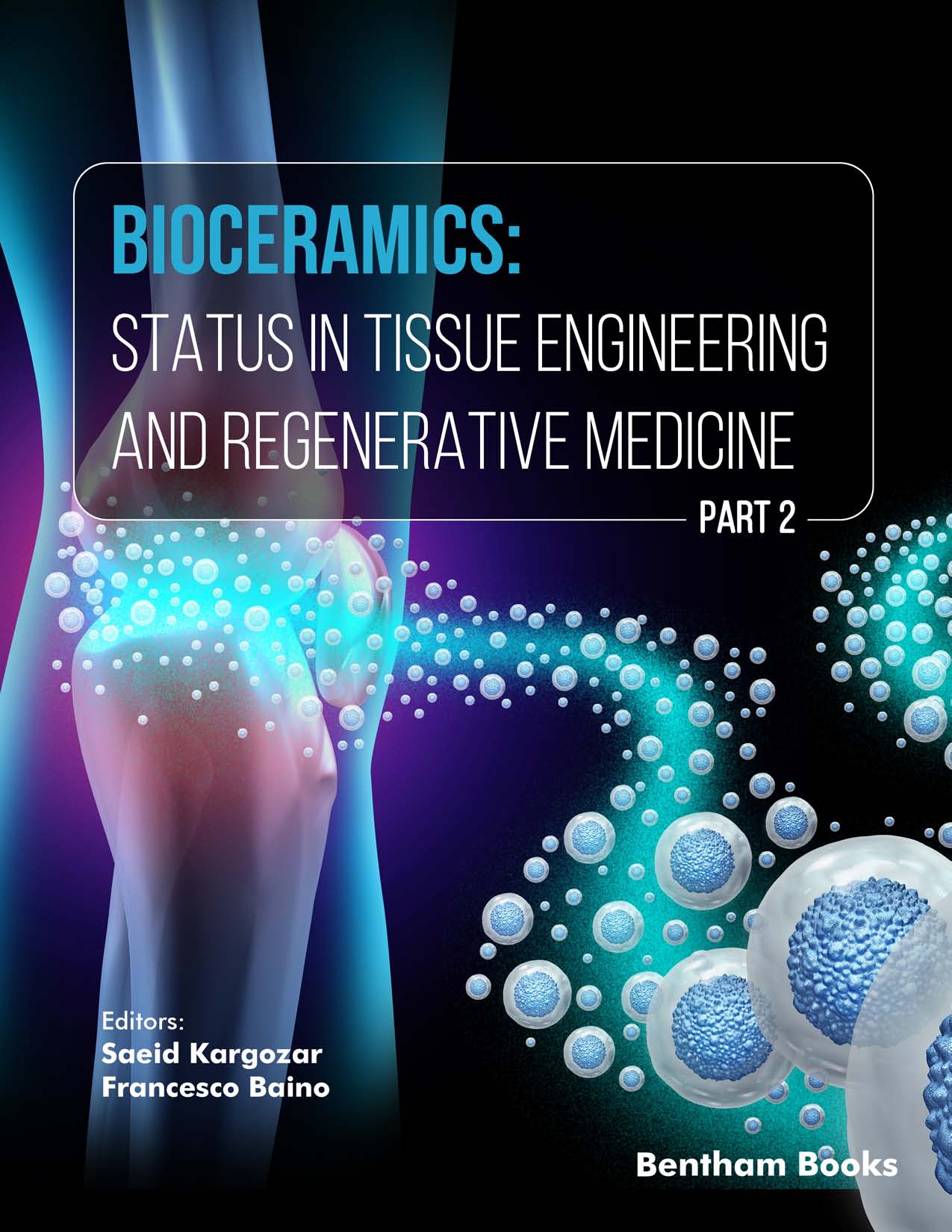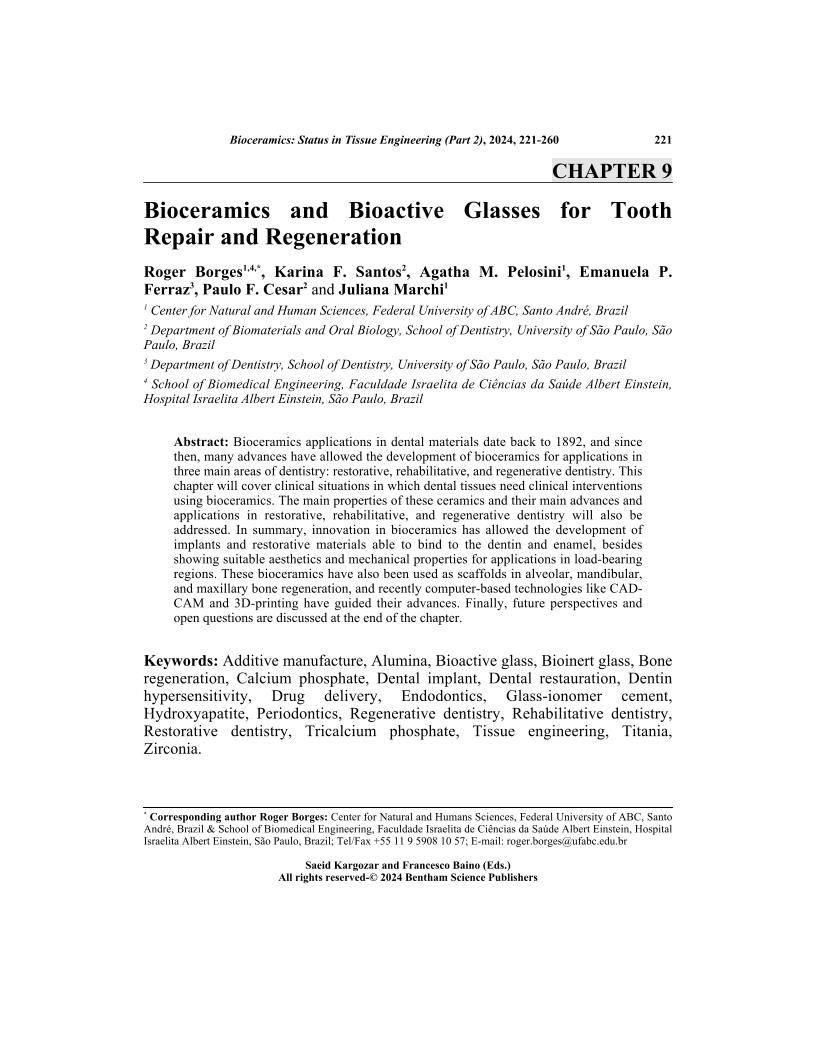Bioceramics and Bioactive Glasses for Tooth Repair and Regeneration

- Authors: Roger Borges1, Karina F. Santos2, Agatha M. Pelosini3, Emanuela P. Ferraz4, Paulo F. Cesar5, Juliana Marchi6
-
View Affiliations Hide Affiliations1 Center for Natural and Human Sciences, Federal University of ABC, Santo André, Brazil 2 Department of Biomaterials and Oral Biology, School of Dentistry, University of São Paulo, São Paulo, Brazil 3 Center for Natural and Human Sciences, Federal University of ABC, Santo André, Brazil 4 Department of Dentistry, School of Dentistry, University of São Paulo, São Paulo, Brazil 5 Department of Biomaterials and Oral Biology, School of Dentistry, University of São Paulo, São Paulo, Brazil 6 Center for Natural and Human Sciences, Federal University of ABC, Santo André, Brazil
- Source: Bioceramics: Status in Tissue Engineering and Regenerative Medicine (Part 2) , pp 221-260
- Publication Date: December 2024
- Language: English
Bioceramics and Bioactive Glasses for Tooth Repair and Regeneration, Page 1 of 1
< Previous page | Next page > /docserver/preview/fulltext/9789815313895/chapter-9-1.gif
Bioceramics applications in dental materials date back to 1892, and since then, many advances have allowed the development of bioceramics for applications in three main areas of dentistry: restorative, rehabilitative, and regenerative dentistry. This chapter will cover clinical situations in which dental tissues need clinical interventions using bioceramics. The main properties of these ceramics and their main advances and applications in restorative, rehabilitative, and regenerative dentistry will also be addressed. In summary, innovation in bioceramics has allowed the development of implants and restorative materials able to bind to the dentin and enamel, besides showing suitable aesthetics and mechanical properties for applications in load-bearing regions. These bioceramics have also been used as scaffolds in alveolar, mandibular, and maxillary bone regeneration, and recently computer-based technologies like CADCAM and 3D-printing have guided their advances. Finally, future perspectives and open questions are discussed at the end of the chapter.
-
From This Site
/content/books/9789815313895.chapter-9dcterms_subject,pub_keyword-contentType:Journal -contentType:Figure -contentType:Table -contentType:SupplementaryData105

